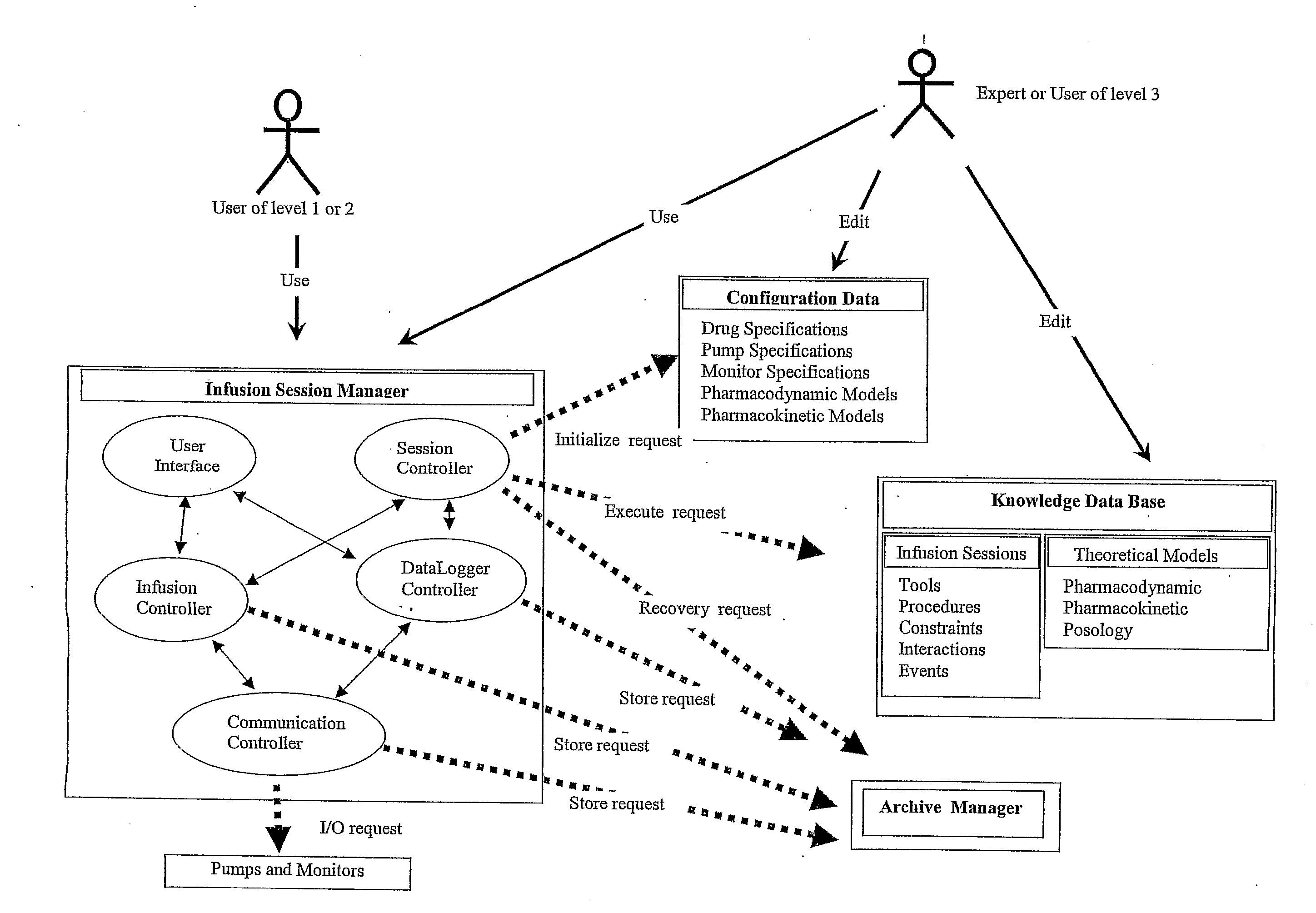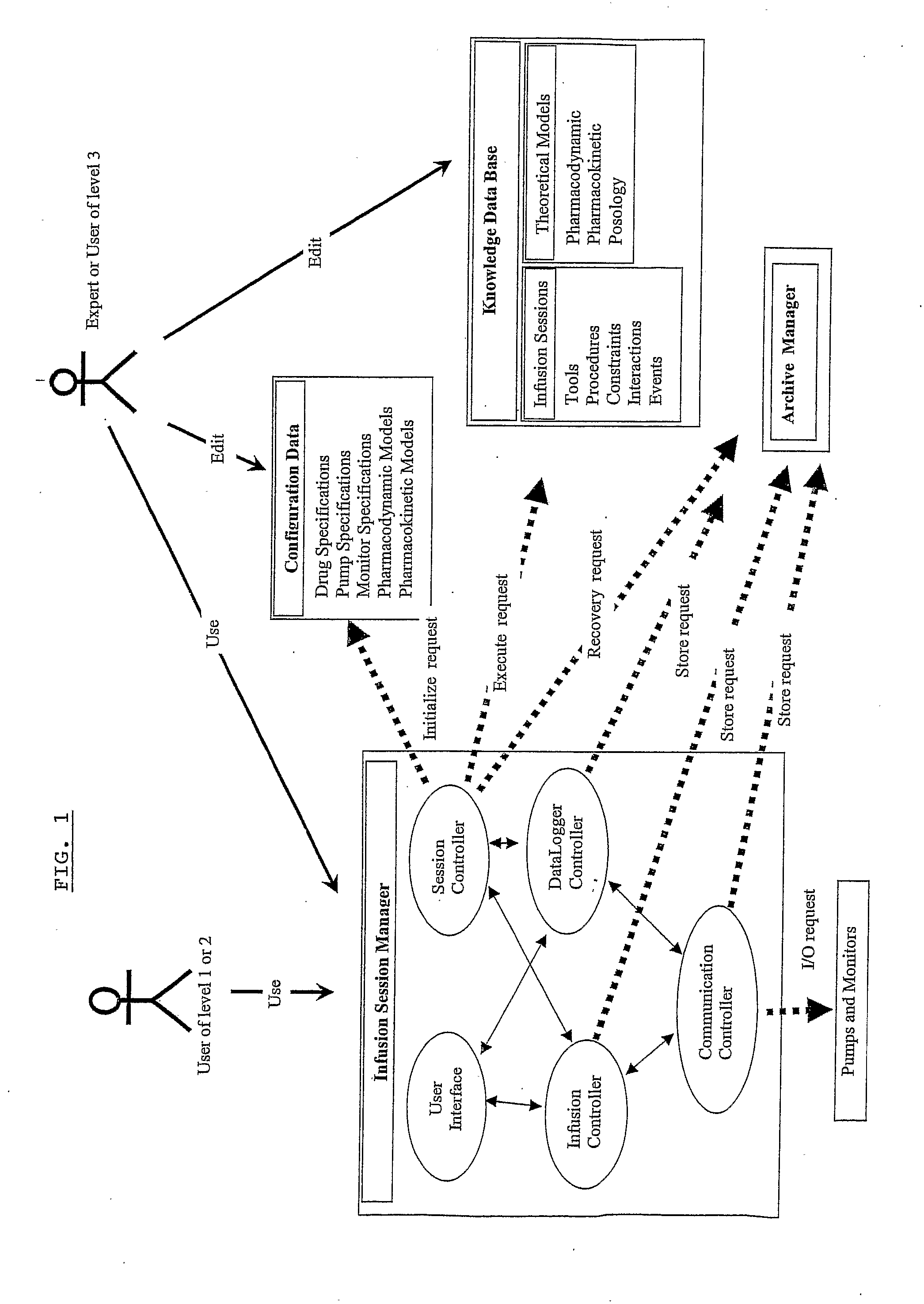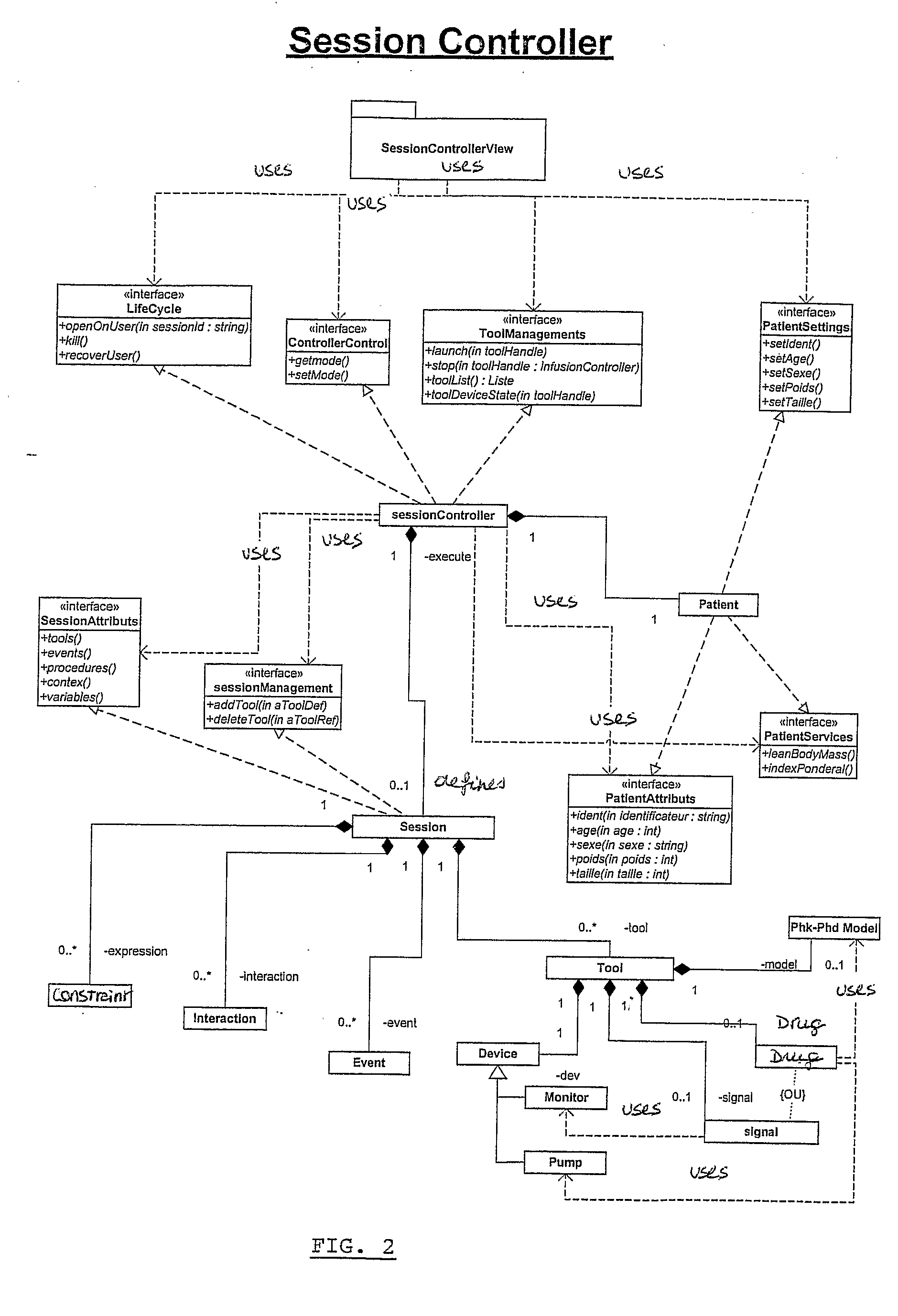Computer-Controlled Intravenous Drug Delivery System
a computer-controlled, drug-delivering technology, applied in the direction of intravenous devices, drugs, medications, etc., can solve the problems of time-consuming, labor-intensive, vulnerable to human errors, and inability to fully account for pharmacodynamic and/or pharmacokinetic models, so as to achieve convenient use and transparent
- Summary
- Abstract
- Description
- Claims
- Application Information
AI Technical Summary
Benefits of technology
Problems solved by technology
Method used
Image
Examples
example 1
A Healthy Patient Subjected To a Standard Type of Surgery
[0089] The following procedural steps give an example for a patient in good health (ASA2) that will undergo a standard surgical operation. [0090] Event sedation=0.5 μg / ml propofol [0091] Event induction=1.5 μg / ml propofol +2 ng / ml remifentanil. The hypnotic dose is then automatically increased in subsequent steps of +0.5 to 1 μg / ml of propofol with a fixed level of analgesic (e.g. 2 ng / ml remifentanil) until the next event=loss of consciousness [0092] Event loss of consciousness=maintaining the propofol concentration at the level whereby loss of consciousness was registered. The concentration whereby loss of consciousness is obtained will be memorized on the demand of the person in charge. [0093] Event preintubation=increasing the concentration of remifentanil up to a level suited with respect to the patient's age, physical condition, the adjuvants being administered and registered by the procedure, e.g. increase up to 4 ng / ...
example 2
An Unhealthy Patient Subjected To Cardiac Surgery
[0101] The following procedural steps give an example for a patient in poor health (ASA4) that will undergo an aortic valve replacement. [0102] Event sedation=0.25 μg / ml propofol [0103] Event induction=1 μg / ml propofol+1.5 ng / ml remifentanil. The hypnotic dose is then automatically increased in subsequent steps of +0.25 μg / ml of propofol with a fixed level of analgesic (e.g. 1.5 ng / ml remifentanil) until the next event=loss of consciousness [0104] Event loss of consciousness=maintaining the propofol concentration at the level whereby loss of consciousness was registered. The concentration whereby loss of consciousness is obtained will be memorized on the demand of the person in charge. This event will be associated with the start of the infusion sequence of the muscle relaxant used if there is one. [0105] Event preintubation=increasing the concentration of remifentanil up to 3 ng / ml. The actually needed value is again memorized and ...
PUM
 Login to View More
Login to View More Abstract
Description
Claims
Application Information
 Login to View More
Login to View More - R&D
- Intellectual Property
- Life Sciences
- Materials
- Tech Scout
- Unparalleled Data Quality
- Higher Quality Content
- 60% Fewer Hallucinations
Browse by: Latest US Patents, China's latest patents, Technical Efficacy Thesaurus, Application Domain, Technology Topic, Popular Technical Reports.
© 2025 PatSnap. All rights reserved.Legal|Privacy policy|Modern Slavery Act Transparency Statement|Sitemap|About US| Contact US: help@patsnap.com



